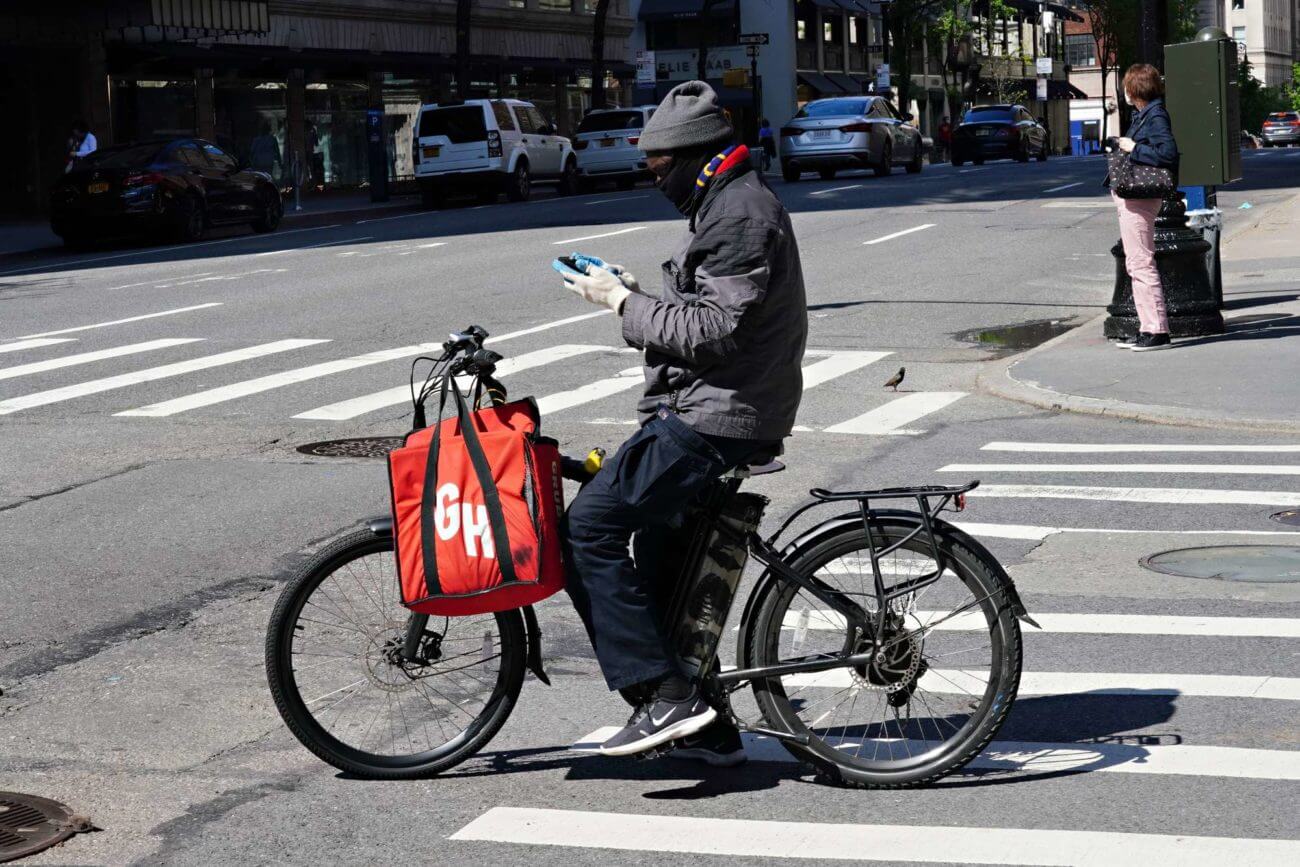
The coronavirus pandemic has helped drive up valuations of food delivery businesses, but companies like GrubHub are long-term losers in an industry struggling for margin. | Image: Cindy Ord/Getty Images/AFP
- Grubhub stock has been on a tear during the pandemic.
- But food delivery services are losing money on orders.
- This is another case of headlines driving stock valuations rather than a hard look at earnings. Food delivery is a terrible investment.
Grubhub stock (NYSE:GRUB) soared above the S&P 500 benchmark as sales grew during COVID-19 lockdowns. Then it took off like a rocket this week over chatter about an Uber Eats merger.
But stay-at-home pandemic sales have hardly translated to profits. The cost structures of the food delivery business don’t allow for big profits. And even the higher sales numbers may vanish when the pandemic is over and people can go back out to eat again.
The recent rollercoaster ride for Grubhub shareholders is based on headlines rather than earnings.
Year to date, the S&P 500 Index is down nearly 13%, while Grubhub stock is up over 11%. The benchmark has recovered by 22% of its level at the Mar. 23 equities bottom, but GRUB has grown by 73% of its Mar. 23 share price.
Grubhub Stock Won’t Deliver Profits
Grubhub stock chart with the S&P 500 Index comparison from Mar. 23-May 14. | Chart: TradingView
Like Zoom (NASDAQ:ZM), Grubhub is one of those irresistible virus stocks that headline readers are piling into because of massive subscriber growth with stay-at-home orders in effect. But having a lot of customers doesn’t necessarily make it an attractive business to buy. The underlying business’ profitability ultimately drives the value of a stock.
In the case of Grubhub, that profitability is hard-limited by an intractable cost structure. Despite the unprecedented opportunity of people stuck at home, food delivery cannot manage to eke out handsome profits. Both Grubhub and Uber Eats are losing money or breaking even on orders.
That’s on top of charging restaurants fees that make partnering with food delivery platforms a losing proposition. Restaurants already operate on thin profit margins. The industry has long operated at below 3% profits for table service restaurants. Compare that to tech companies like Alphabet (NASDAQ:GOOGL) with gross earnings of 24%, or Apple (NASDAQ:AAPL) operating with a 38% gross profit margin.
Jason Dicken, who owns two Spudz-N-Stuff restaurants in Evansville, Indiana, has asked customers to order directly from him, not Grubhub or Uber Eats. Los Angeles restaurant owner and consultant Adam Weisblatt said:
The delivery fees and service charges from these websites are murder. They’re incredibly high rates. It’s almost impossible to profit at all.
On top of that, the food delivery services charge customers fees for orders. And Grubhub drivers find it harder to make a living while paying for their gas and car depreciation. These are cost structures without big profits to scoop.
Food Delivery Isn’t A Tech Industry–Yet
Investors are willing to forego present profits on tech stocks for the promise of massive future earnings. Many tech companies take years to become profitable while reaching scale, but once they do, they deliver outsized profits.
In their present form, food delivery companies like Grubhub cannot follow this model to profitability. It’s a grind for everyone involved: the delivery service, the drivers, the restaurants, and the customers.
Uber Eats is banking on establishing brand loyalty that will translate to profits when drone delivery will cut costs. That’s an exciting proposition, but it will be years before drone delivery reaches scale. It will take time to implement something as complex as a mass delivery drone infrastructure and jump regulatory hurdles along the way.
As we saw with Google leapfrogging Excite, RefDesk, and Yahoo to dominate online search, there’s no guarantee Uber Eats or Grubhub will emerge as the dominant player in this space. A start-up that doesn’t exist yet could enter the market later with a second-mover advantage and no years of losses on its books.
It’s still too early, and very speculative to invest in Grubhub stock. The insane cost structures, in the meantime, make it a losing proposition for years.
Disclaimer: The opinions expressed in this article do not necessarily reflect the views of CCN.com. The above should not be considered investment advice from CCN.com. The author holds no investment position in any of the stocks mentioned at the time of writing.
This article was edited by Sam Bourgi.






